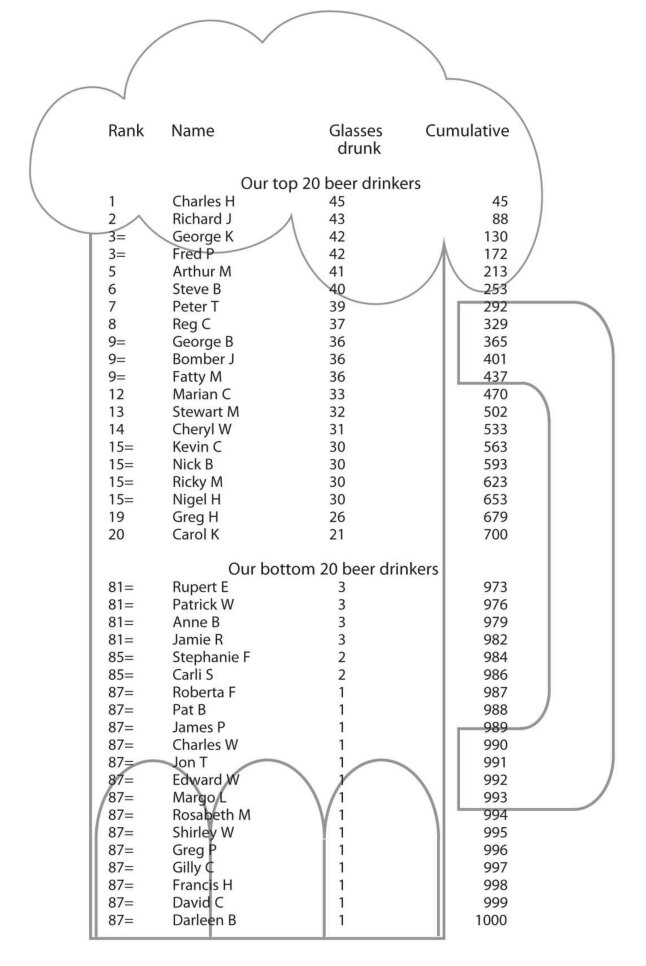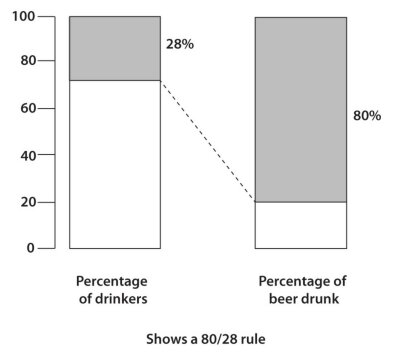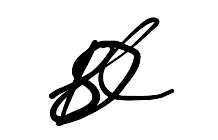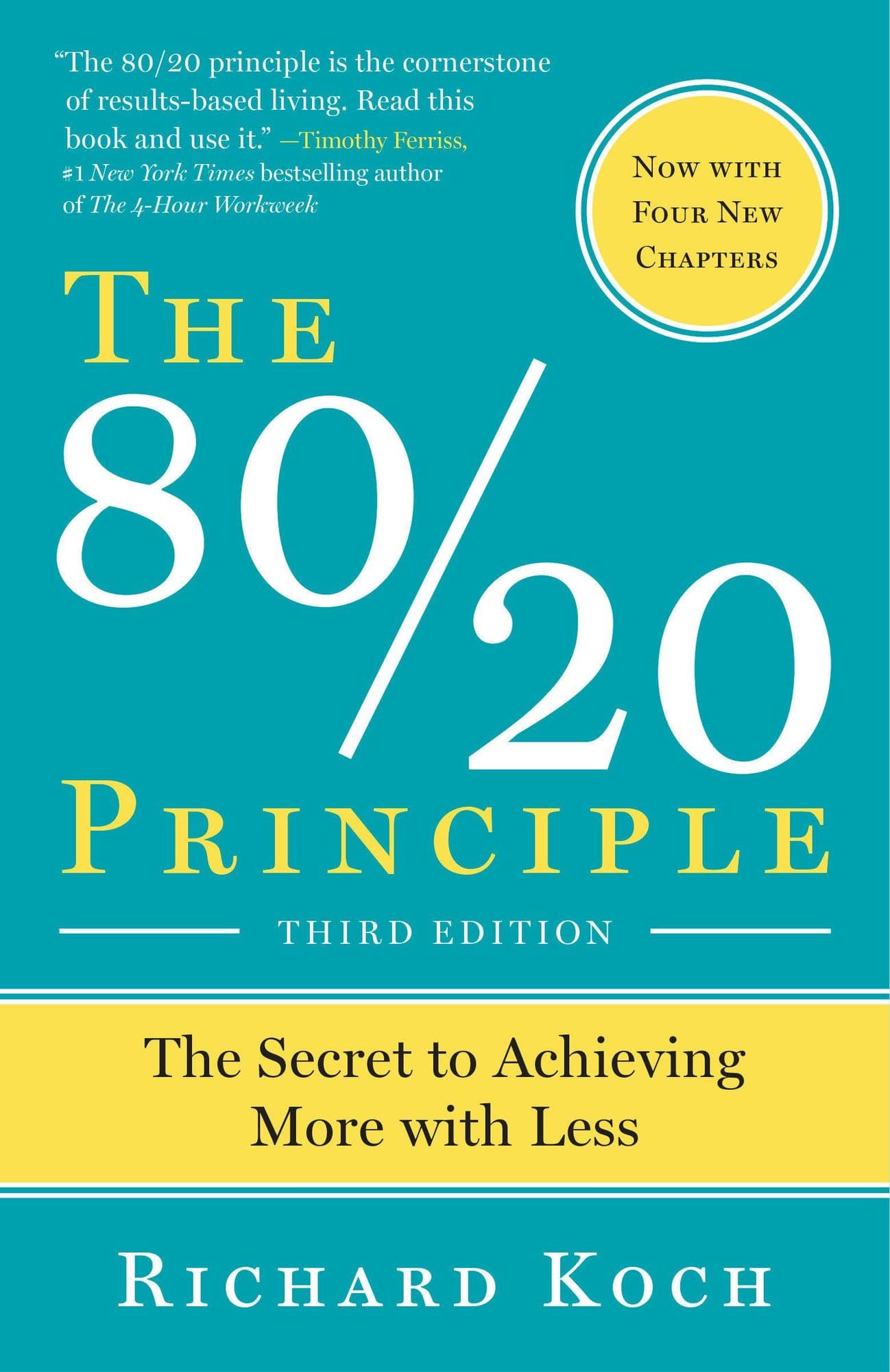- Author: Richard Koch
- Publisher: Hodder And Stoughton Ltd.
- Rating: ⭐⭐⭐
- Link Amazon : Book The 80/20 Principle
- Pages: 336
- Time to Read: 11 Days
🚀 The Book in 3 Sentences
- The 80/20 Principle can and should be used by every intelligent person in their daily life, by every organization, and by every social grouping and form of society.
- The world is not linear, it is unbalanced: some forces are always more forceful than others.
- Start to think 80/20 and start to use 80/20 Analysis
🕵🏼Who Should Read It?
This book does not have a specific target audience; rather, it offers something for everyone. The 80/20 Principle can be applied in any part of the world. Therefore, everyone should read this book to understand the principle and learn how to apply it to their specific circumstances.
☘️ How the Book Changed Me
I already knew about the Pareto or 80/20 principle, but I had only tried to apply it to studying. I had never considered applying it to marketing, business, or anywhere else. The book improved my understanding of the 80/20 principle and opened my eyes to its presence in my surroundings. Now, I try to think more in terms of 80/20 and implement it in other areas of my life, not just studying.
✍️ My Top 3 Quotes
“The universe is not a straight line.” Richard Koch
“A few things are always much more important than most things.” Richard Koch
“Progress means moving resources from low-value to high-value uses.” Richard Koch
📒 Summary + Notes
The 80/20 principle is a pretty known method for managing time. Most people have heard this principle before and associate it with the man Pareto, who was the inventor of the 80/20 principle. What most people don’t know is that the 80/20 principle applies in almost any part of the world which is why it is important to talk about what the 80/20 principle really is.
What
As mentioned before, the 80/20 principle was discovered by Pareto and then rediscovered by Zipf. Zipf investigated Pareto's principle further and applied it to people, goods, time, and many other things. One possible definition of the 80/20 principle is therefore:
“The 80/20 Principle asserts that a minority of causes, inputs, or effort usually lead to a majority of the results, outputs, or rewards.”
This for example means that 80% of a school project can be done in only 20% of the time. This means that if you have 10 Days to complete a school project, you can do 80% of the required work in only 2 Days.
Whom
One of the best parts of the 80/20 principle is that it can be applied by everyone. In fact, Richard Koch said the following in response to the question of who can use the 80/20 principle:
“The 80/ 20 Principle can and should be used by every intelligent person in their daily life, by every organization, and by every social grouping and form of society.”
Why
It is a big deal if a single method can be applied to everyone's life. But why is the 80/20 principle applicable in such a wide range of scenarios? The most important thing about the 80/20 Principle is that it can help individuals and groups achieve much more with much less effort. The 80/20 principle can increase personal effectiveness and happiness. It can multiply the profitability of corporations and the effectiveness of any organization.
How
How can you implement the 80/20 principle in your daily life? There are two applications of the principle: 80/20 Analysis and 80/20 Thinking.
80/20 Analysis
The 80/20 Analysis is precise, quantitative, requires investigation, provides facts, and is highly valuable. It examines the relationship between two sets of comparable data. One set of data is always a universe of people or objects, usually a large number of 100 or more, that can be turned into a percentage. The other set of data relates to some interesting characteristics of the people or objects that can be measured and also turned into a percentage. An example of the 80/20 Analysis can look something like this:

Figure 6 in the book - 80/20 Analysis Example
In a group of friends, it was measured which person drank the most beers and sorted in descending order. This set of data can now be used to create a bar chart, which is the type of diagram that best displays the relationships in the 80/20 Principle.

Figure 9 in the book - shows an 80/28 ratio
In this type of diagram, we can see the unbalanced ratio between beer drinkers. This diagram shows that 28% of the people measured drank 80% of all the beer.
80/20 Thinking
The 80/20 Thinking is more fuzzy, qualitative, requires thought, and provides important insights. This type of application is used if there is no time to do an in-depth analysis of a set of data. 80/20 Thinking is for daily life and all the non-quantitative applications of the principle. As with 80/20 Analysis, we start with a hypothesis about a possible imbalance between inputs and outputs, but instead of collecting data and analyzing them, we estimate them. This helps us to spot the few really important things that are happening and helps us ignore the mass of unimportant things.
And then
When presented with data or a bar chart that displays the 80/20 Ratio, it is now possible to take action. This insight into income and outcome distribution allows for the reallocation of resources from the less productive to the more productive side, as well as the simplification of your product, company, or strategy. Another economically sound action is to outsource unproductive processes to individuals who are more productive in that particular area. This allows you to focus on your speciality and be more efficient and productive.
When
The 80/20 principle is highly versatile and can be applied to various aspects of life. It can assist in daily life by increasing efficiency and productivity. In marketing, it can help identify the customers that should be prioritized. In business, it can aid in defining strategy, improving quality, reducing costs, enhancing service, facilitating decision-making, project management, and even negotiation.
The 80/20 principle can also be applied to personal connections and alliances. Make use of alliances with other people extensively, but limit your alliances to only 20% of people and to the 20% of them that are strong allies. Then, aim to connect your alliances to other individuals who also fall within the top 20%.
As you can tell by now the 80/20 Principle is a powerful tool which should be used by every person daily. Although the book’s taught principle is really important I gave the book only 3 Stars because I felt like most of the book’s teachings were a bit self-explanatory. Non the less I can really recommend reading the book if you don’t now the 80/20 Principle already. With that feel free to share your thoughts about the 80/20 Principle in the comments below and I hope to see you in my next blog post.
With regards
Devin Hasler

